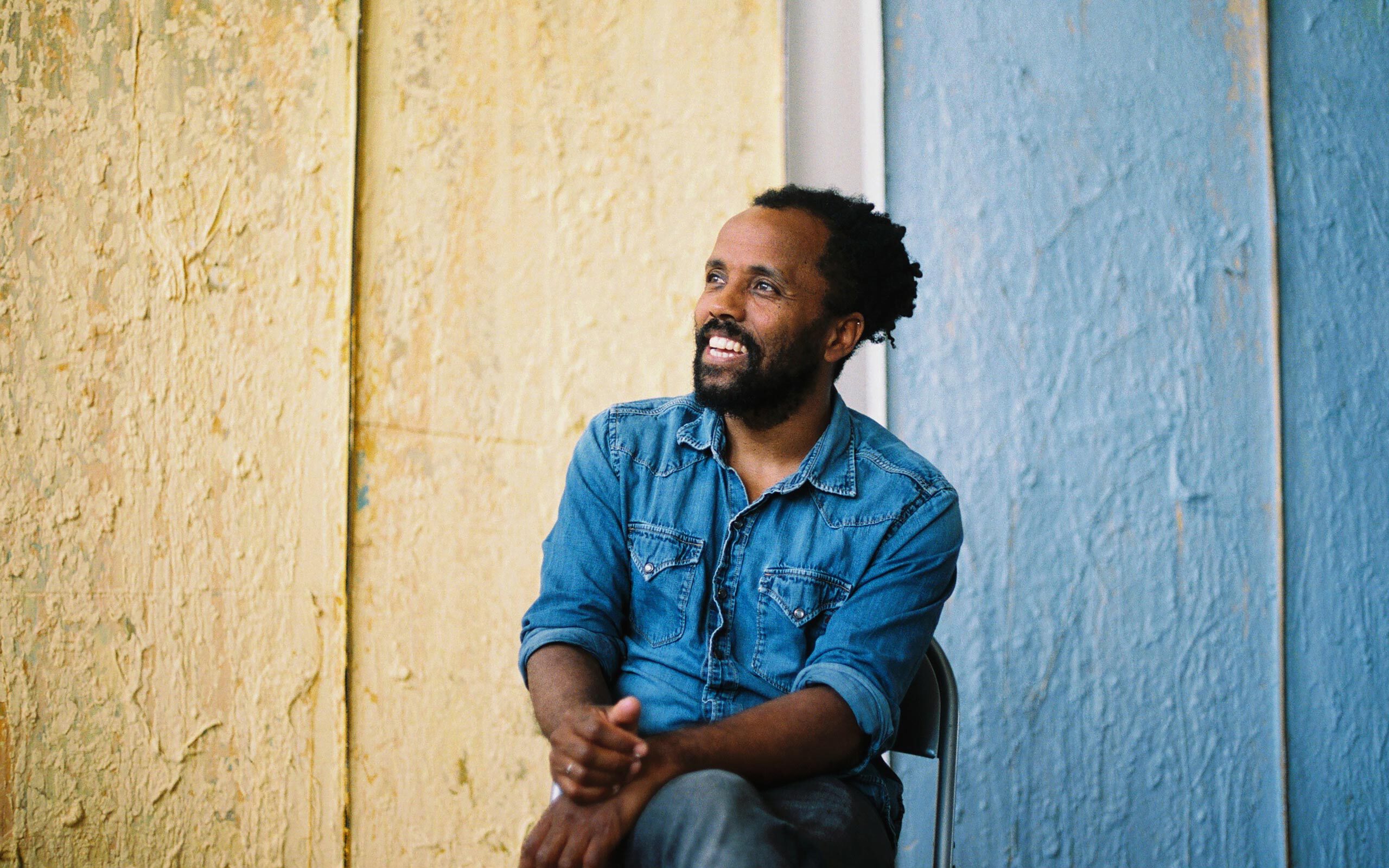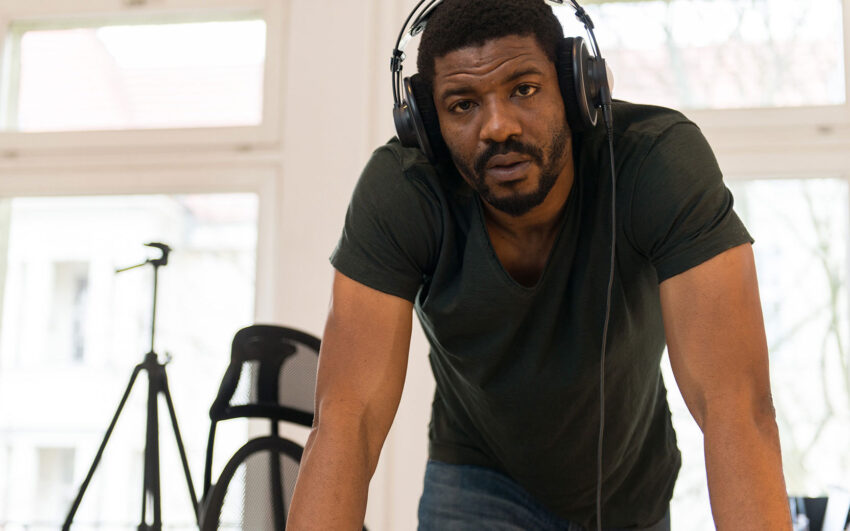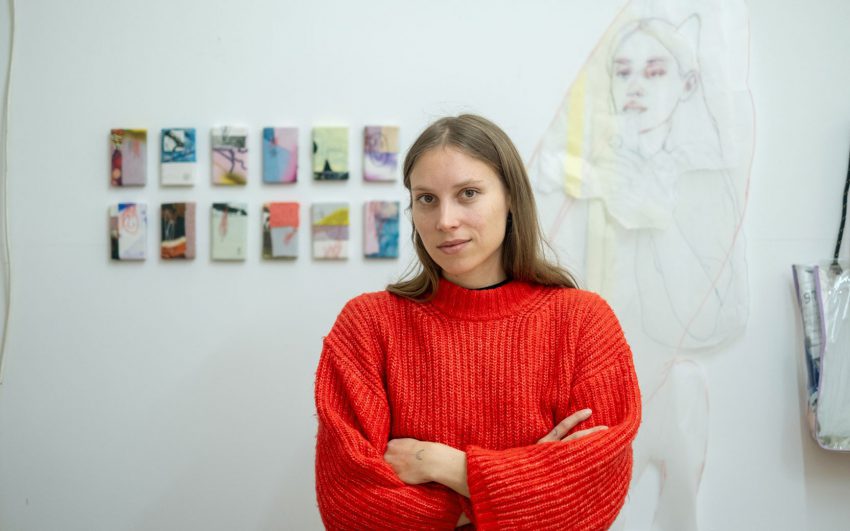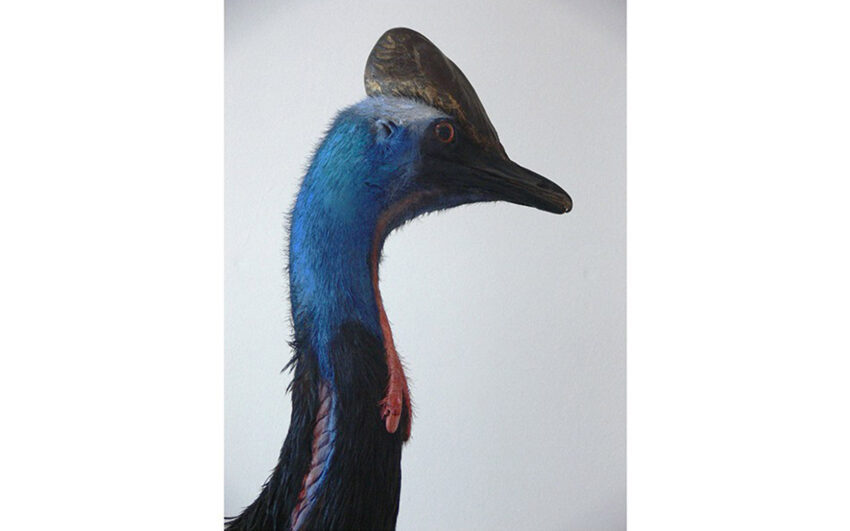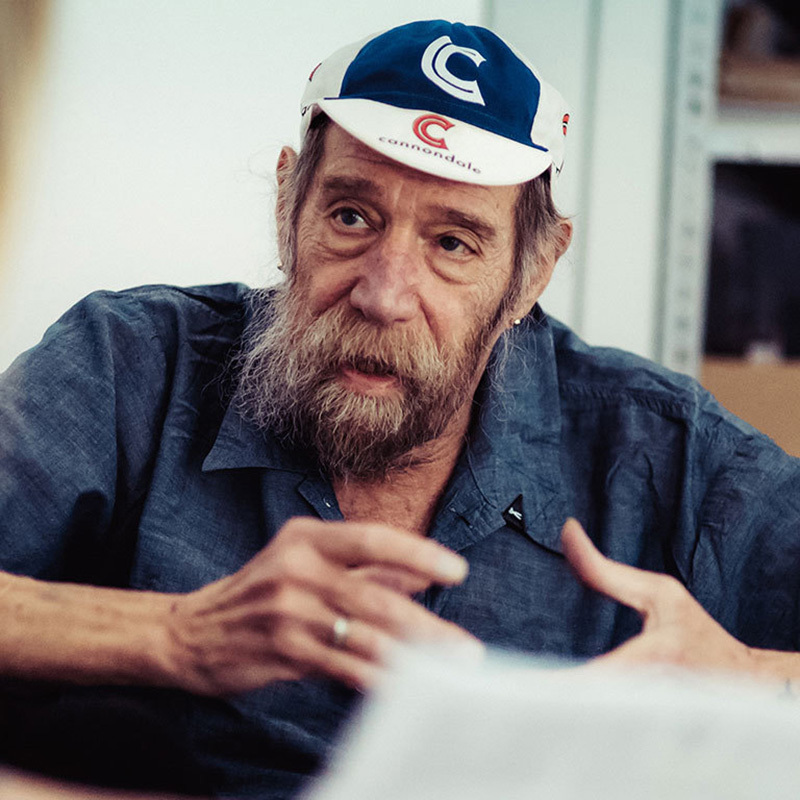Carlos Bunga is a nomad, a performative figure wandering amidst a philosophical reflection on his own practice and the cartographic unfolding of his career disclosing a series of material and sensitive relationships where the respective positions of thinking and doing are intertwined. In this area of productive displacement, currently situated in an old textile manufacturing plant in Mataró, Bunga’s interdisciplinary work moves between sculptural paintings. His supported, yet vulnerable installations, drawings, and performances are an open, multiplicity and perpetual, reflection on how we experience and coexist with the (un)built environment.
Carlos, how did you arrive at creating art?
Art for me was never a choice, but a necessity. I found in art a meaning for my life, a way to be in the world; I feel that art saved me because she served me as therapy and helped me to find myself giving me a sense of things through the use of my imagination, because without imagination nothing can be created, nor can any goal be achieved. I’ve always been an introvert and art is a way to express things that I feel and want to say. My life is marked by displacement and loss, by nomadism and emigration. I’ve always been moving from one side to the other, all of thesecircumstances of adversity influenced this need to express myself and my place in the world by creating art. I had always liked to draw and paint. I come from a small village and when I entered high school, there was no art class. Together with a group of friends we formed an art class. Fundamentally, I then decided to study Fine Arts at the Escola Superior de Arte e Design in Caldas da Rainha in Portugal. It was a small university compared to the fine arts universities of Porto or Lisbon. It was a very particular university; restless, insurgent, from which no great figures or artistic references had yet emerged. That term in college marked me a lot, but there was never a specific moment I can point to. I came to the university as a painter, I really didn’t go there to become an artist, I went because I loved painting and didn’t think much beyond that.
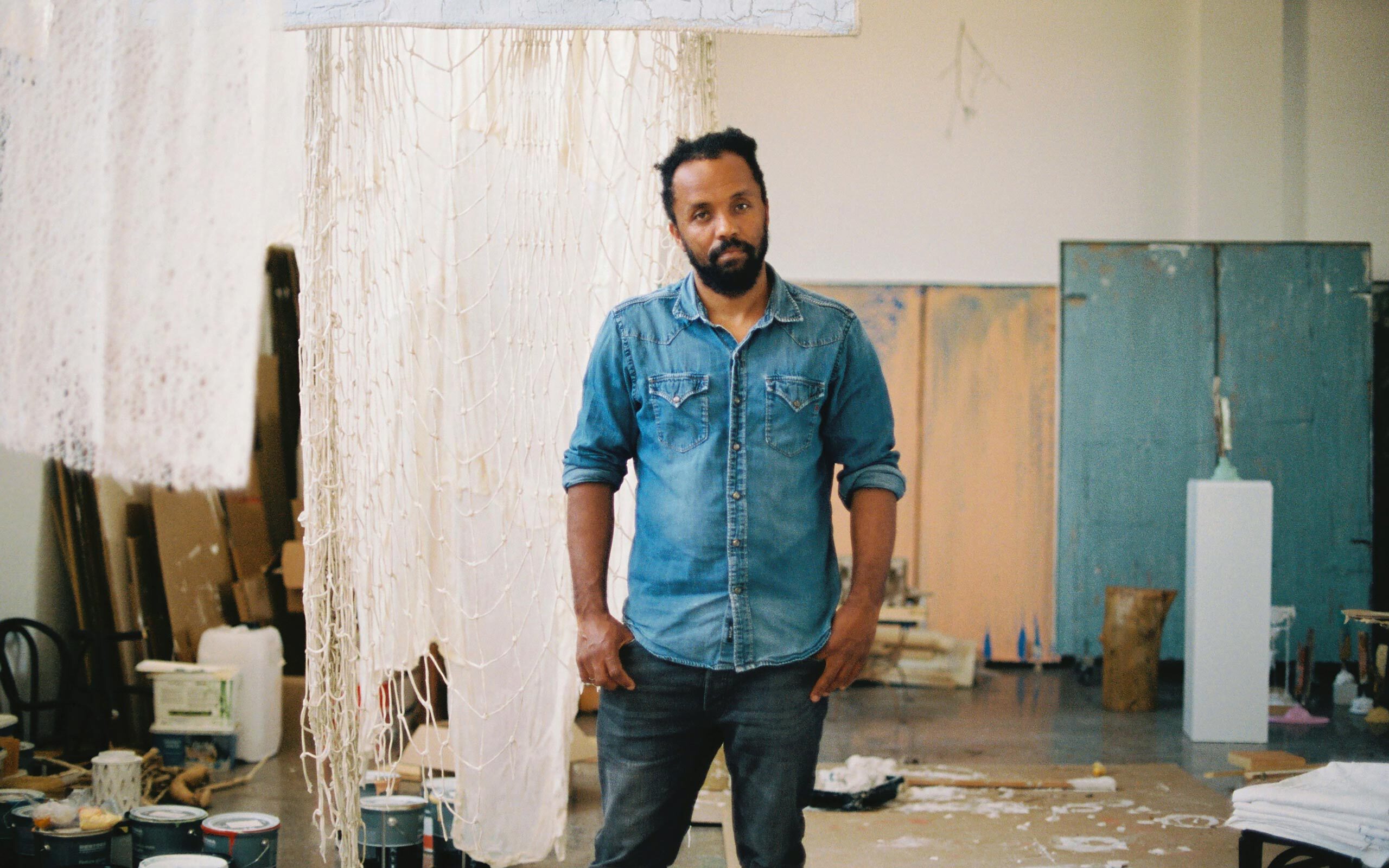
And, when did you become aware of the fact that you were an artist? Was there a particular moment that triggered the realization?
There was no particular moment. The frustration, despair, anguish, and trauma that we all have, must be confronted so that we can find a personal balance. Becoming an artist was a long, slow, and difficult path in my life; I was unaware for most of my life that I wanted to be an artist. The university and the professors raised awareness in me, and then, the “how to start being an artist” syndrome comes to you and you feel completely lost. Shaping an artistic career is a mix of coincidence and luck. No matter how talented you are, things always happen over which you have no control. During my last year of university, a professor invited art professionals from all over the country to visit the campus. Museum and gallery directors came and invited some of us to participate in the Prémio Novos Artistas Fundação EDP. A prize for young artists was to exhibit at the Serralves Museum. I won the award. In that jury was Marta Kuzma, appointed as co-curator of Manifesta 5 the following year in San Sebastián, in 2004. And there, of course, there were great artists from all over the world with whom I could hang out. That was my first international show. I did an installation in the Kubo Kutxa room, in Rafael Moneo’s Kursaal building. At the opening, I decided to do a performance by deconstructing the installation which made a big impact. Since then, I have traveled to several countries through scholarships and residencies.
Is that how you started to define yourself as an in transit or nomad artist?
I grew up being a nomad. I spent a large part of my life living in several different houses, moving from one to another. I learned to adapt and find my place in these transitory and sometimes vulnerable places. Nowadays, I feel like a nomad in the way I think, and also in my practice; each Project belongs to the place in which it originated, was produced, and exhibited. For me nomadism is not only a physical issue, but also a mental one. It’s a different way of looking at the world. Somehow I am interested in exploring the idea of accident or even trauma, and the different ways in which we deal with them depending on the distance from which we experience them. Our perception of the world changes when we live in transit. We relate more, we are more tolerant. We live multiple experiences that structure us as individuals. We face life, death, or trauma in an imminent way. It is a vital learning process in a relational, localized, and self-reflective way.
But now you are based in Mataró, the largest town of the comarca of the Maresme, 30 km away from Barcelona. How long have you been in this studio? How has this affected your practice?
I finally have a studio, my home most of the time. For years I didn’t have a studio. The studio might be a coffee table, it might be just a sheet of paper. An empty sheet of paper can be a space on which to express unconscious repressed desires. The studio’s physical space has always been relative. My studio was always my head and I always worked adapting to the places I found and where I lived. Sometimes it’s not physical but only mental. Be as it may, in this mental space I can add, subtract, multiply, restore, or accelerate temporalities. The laboratory is the meeting point between past and future. It was around five years ago when I found this place. It used to be a textile factory. We converted it into a wide-open space. Until now my work has always revolved around the exhibition space, with site-specific pieces, now I can work in a different way.
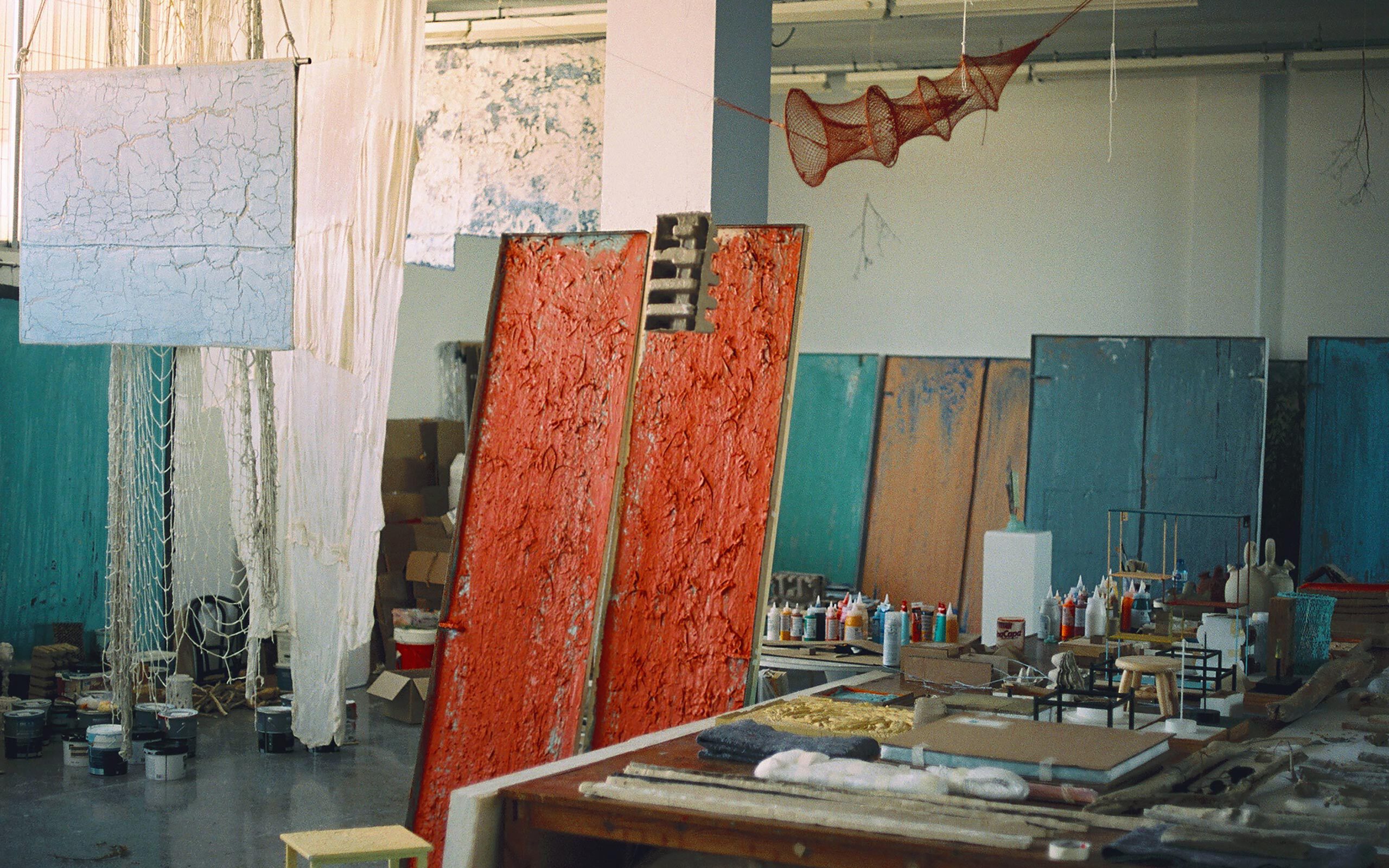
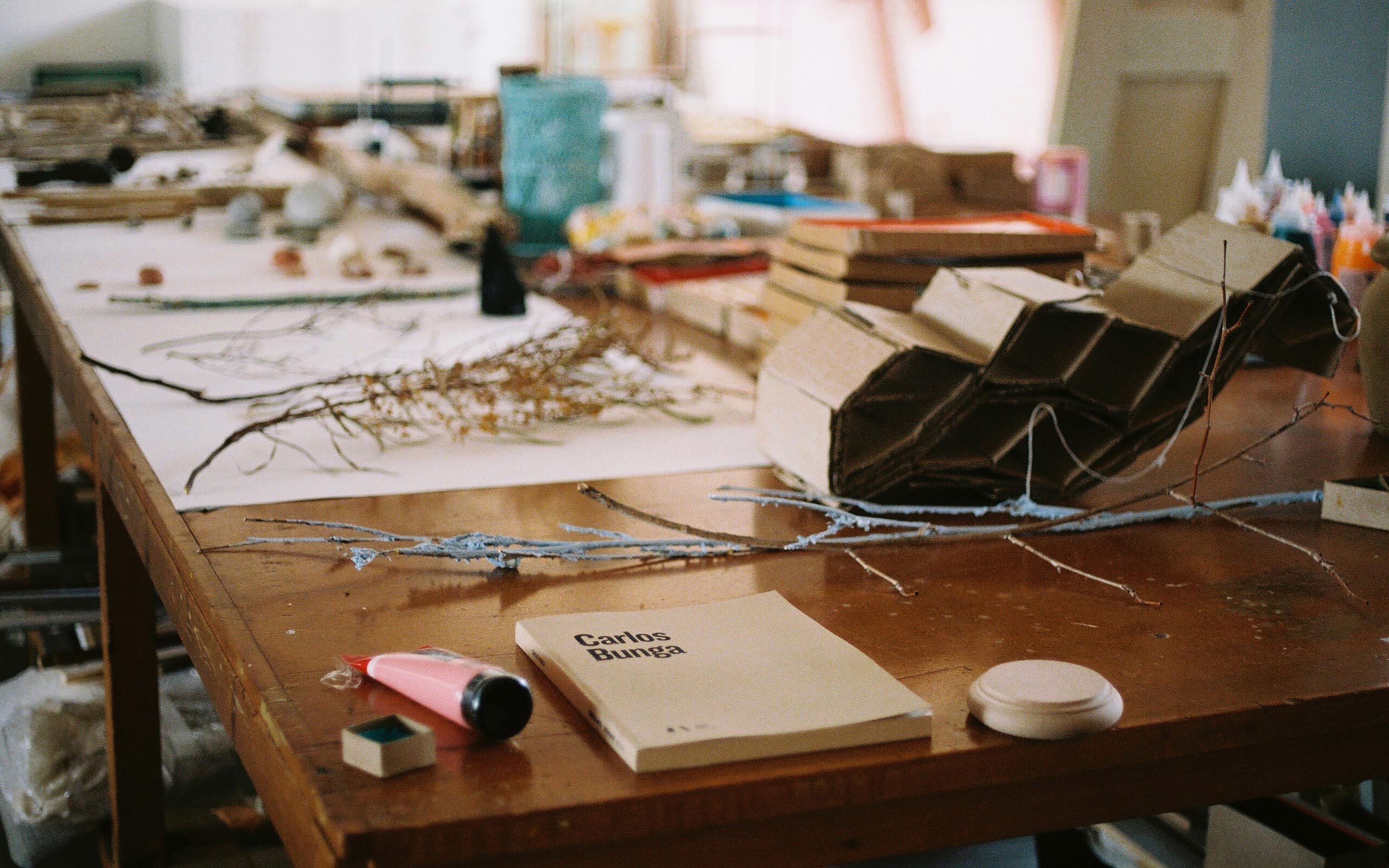
There is a diversification of gestures in your studio. What connects them?
The studio and my work function as a kind of constellation of ideas, gestures, or experiments. A laboratory of constant experimentation. I am interested in exploring the memory, traces, the vestige of the gesture. I feel a certain degree of anguish about the two-dimensionality of the painting but, at the same time, I don’t want to lose sight of it. For this reason, I like to think in terms of expanded painting in space, almost sculpturally into the layers of the apparatus, which reverberates the movement that came before as the one that comes after. On the other hand, I have got back to work with furniture after spending many months locked up in the studio due to the present confinement. The idea of home and job have changed, as well as the ways we live and work. Nature is one of the most powerful elements in the studio during this confinement. We have all been forced to hibernate inside our homes so that nature can have room to breathe. I felt a great need to incorporate nature into the studio and in my work. Nature has always been present in the drawings and reflections I made, but now I have started to physically incorporate it into the works.
In addition to the paintings and furniture, we find a large model structure. Can you tell us about it?
It is the first time that I have tried to work with a model. I’ve never done it before and if you look at it, the model is empty. There is nothing projected into it. The projection is in my head, but I don’t dare to fit it in the model. It doesn’t come out. It is the structure of the Crystal Palace of the Retiro Park in Madrid, where I will deploy an installation next year commissioned by Museo Reina Sofia. Anyway, I’ve always been interested in the idea of a model. The site-specific installations I perform in spaces are a kind of scale model 1:1. They are projections of an idea in space. I’m very interested in the concept of a mockup as a kind of mental projection of a temporal experience. Before this Project in Madrid, this autumn, I will be in Vienna. I am preparing a solo for Secession, which was scheduled for 2020, and which has had to be postponed due to the pandemic.
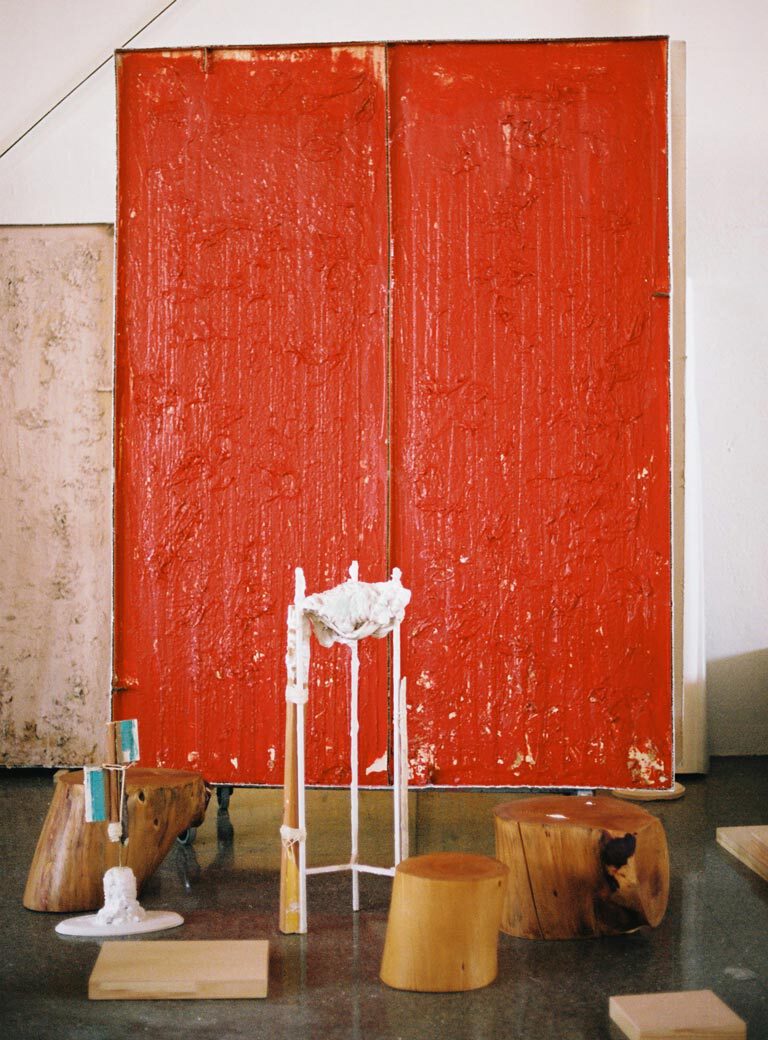
Is there a particular concern that determines your work?
I am interested in the conceptual, but also in the connection with the visceral part of my work. I’m interested in connecting this more intuitive side with that of mentation, also that each work functions as a challenge enabling you to experience this moment of the “here and now” in an extremely intense way. One of the things that fascinate me the most is to feel that as an author I can be surprised by the works I do. The process is often more important than the final result. I look at the spaces where I will carry out the projects as in the past either in their story or their identity. The project I make is a kind of architecture; it’s not a real space but a mental idea, a projection of something. When we walk in that space we are walking between the past and the future and we are the present. It is very important that you can move around and have a temporal experience in the space, because our movement activates the space. When I finish an installation, people ask me how I have done it and I always answer the same thing: I don’t know. I am interested in paying attention to that unconsciousness. Therefore, I understand the museum space as a laboratory, a zone for exchange, an expanded studio. The intuitive, the excuses, the mistakes, the attempts are fundamental parts of my work. And at the same time, I do not want excuses to determine the conditions of possibility for a piece. I like to embrace the processes’ contingency and gravity. And in a way that has a lot to do with some Eastern cultural postulates, particularly in Buddhism.
How would you describe the art that you do in a few simple words?
Words like process, nomadism, laboratory, attempt, entropy, absence, and error come to mind… I am interested in processes that allow the activation of other consciousness. It is an active and always unfinished search towards the opening of cracks, fissures in the given solutions to the domesticated ideas imposed by the system.
Is there a prejudice or misunderstanding concerning your art that persistently prevails?
I use cardboard but I don´t talk about cardboard. When I started to appear, and I was not fully aware of what I was doing, there was a tendency towards the centering of my practice linking it only to cardboard, homelessness, shanty towns, and emigration… There seemed to be no room for other definitions. It’s as if they wanted to trap you inside a place where the symbols coincided with what you were doing. But despite the doubts and uncertainties I had about my work, I felt that the work was much more complex and I wanted to explore and expand future possibilities. I felt intuitively that my work could be much more abstract, open and full of connections. We feel the need to catalog, identify or flag things so that we feel comfortable with what we see. However, my work somehow tries to escape such cataloging. It is work that identifies with such concepts as nomadism and the in-between.
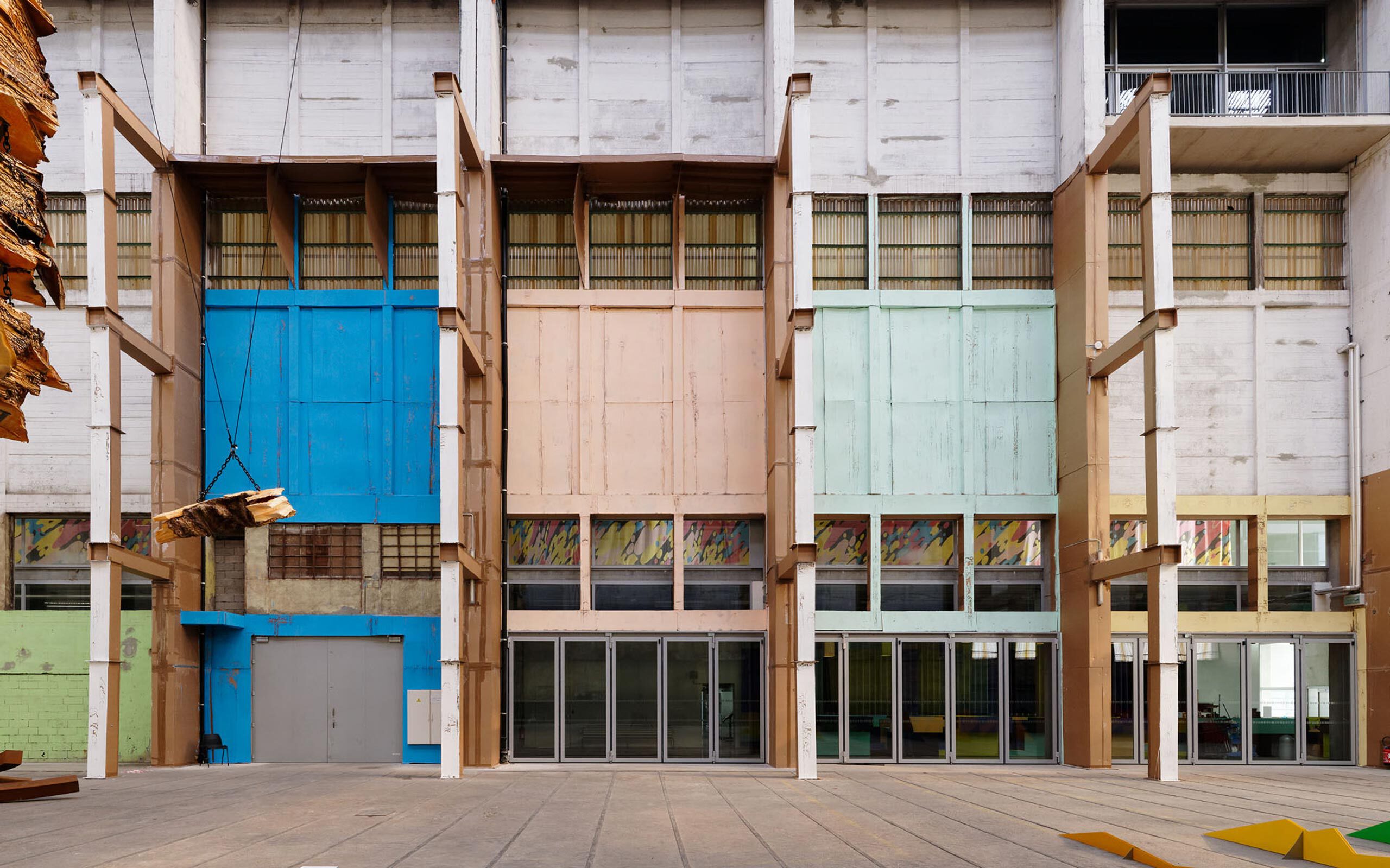
Cathedral, 2019, Site Specific installation at Gigantisme Art & Industrie organized by FRAC Grand Large in collaboration with the association L'Art Contemporain and the Littoral Hauts-de-France Chamber of Commerce and Industry, Cardboard, tape, latex paint and glue, Photo: Aurélien Mole
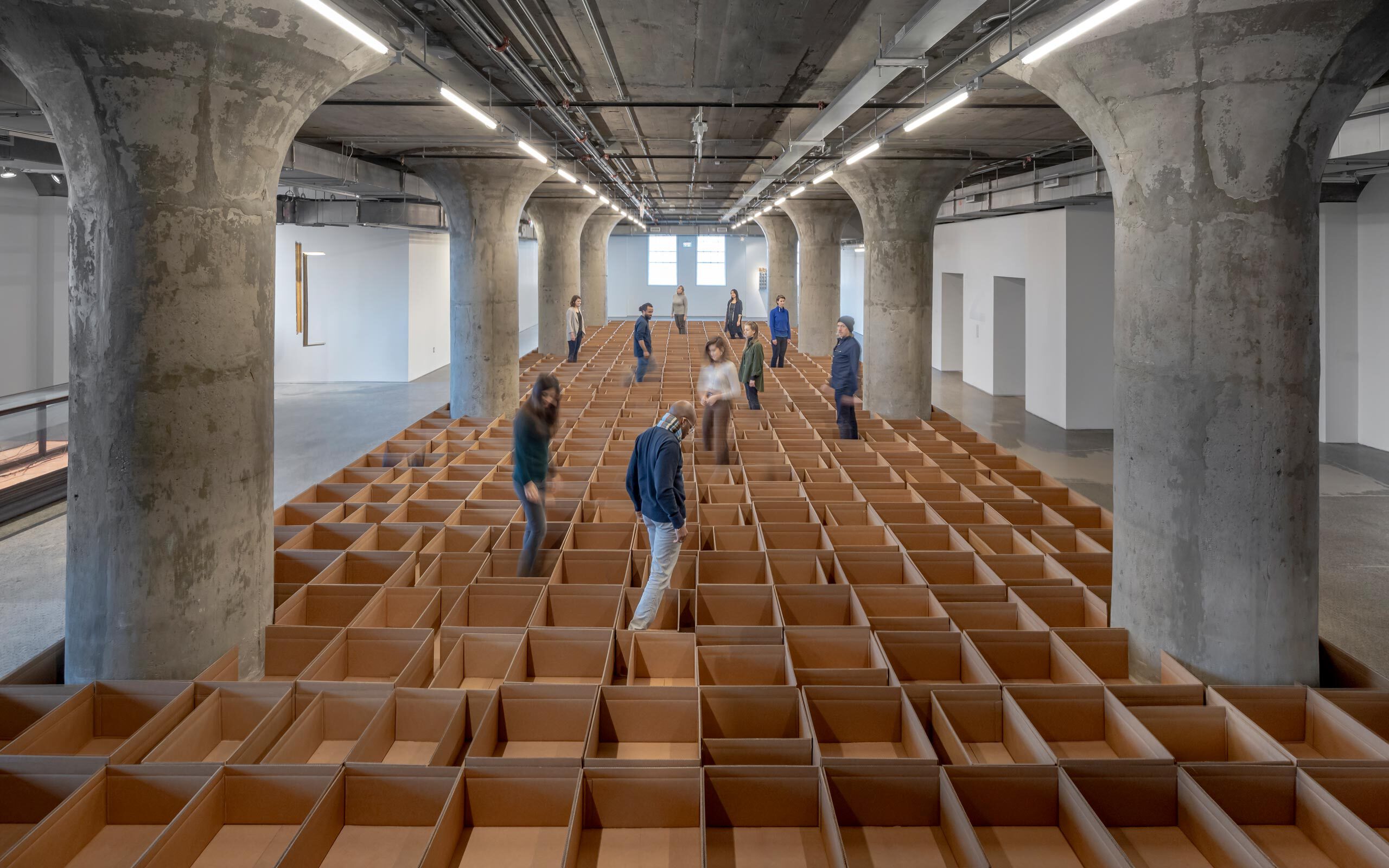
Occupy, 2020, Site Specific installation at MOCA Toronto, Cardboard, latex paint, tape and glue, Photo: Toni Hafkenscheid
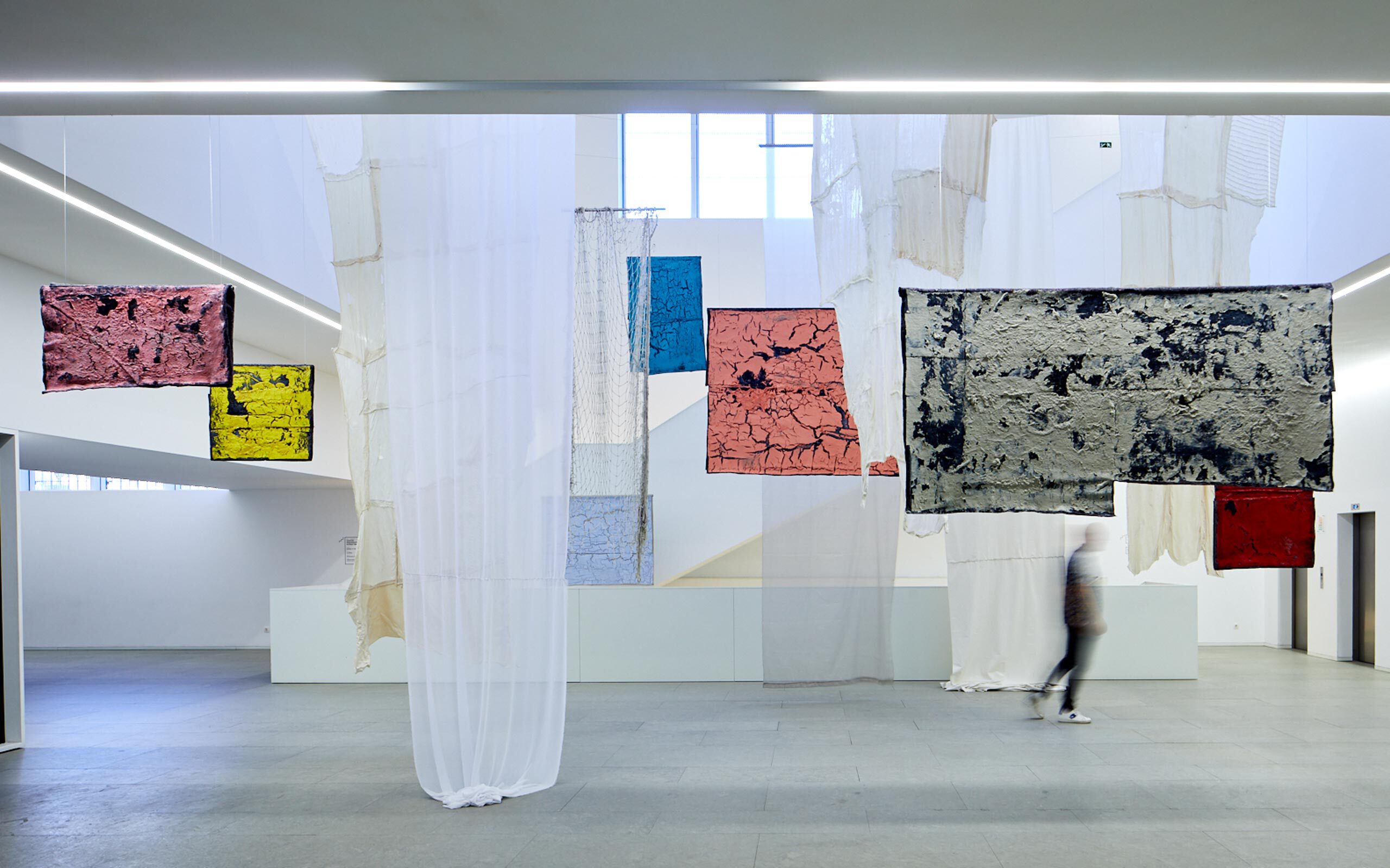
Architecture of Life, 2019, Installation view, Several works, Photo: Vasco Célio
How does the art you create fit into our times?
It allows the raising of questions regarding hegemonic thinking and ways of living. Somehow, these crises have shown us how human beings are part of a complex ecosystem. Climate change forces us to look at the world in a different way, from a less anthropocentric, less colonizing perspective and to incorporate nature, which precedes and subsumes us. It is necessary to abandon the conservative gaze that places the human being as the measure and center of the Universe. The human being is a virus on the planet. I feel that art is essential to bring awareness and promote a change in that privilege of partial perspective.
Do you have personal references in art history, fellow contemporary artists whose work you appreciate?
The Gutai group became a turning point for me. The Japanese Gutai group arose from ground zero in a country completely destroyed and defeated in World War II, and emerging from the shadows of totalitarianism. In response to the reactionary artistic context of the time, this group of artists strove to create new and vital experiences seeking to dissolve the boundaries between art and life. Saburo Murakami, one of the founding members of the group – I don’t know if it was before or after the influence of Lucio Fontana (1899-1968) who was an influence on a number of founding members of the Gutai movement, even though the temporality is not so important for me –, evoked that same gestural abstraction, that same revolutionary gesture in space but pushed to its climax. That desperate crying of the body, that performative action taken to its limit is something that has always moved me and that has certainly marked my performances by bringing awareness, coming as I do, from a more classical tradition of fine arts. I am also very interested in the Dada and Cubist movements because of their definitive break with traditional painting, the elimination of the single point of view and the inquiry into oblique perspectives, where the gaze is blurred in a multiplicity and complexity of views. Fred Sandback, Helio Oiticica, Ana Mendieta, and Louise Bourgeois interest me a lot. But basically, just daily life, or being in Mexico, or in the Arizona desert, or traveling through Latin America, all are inspirational to me.
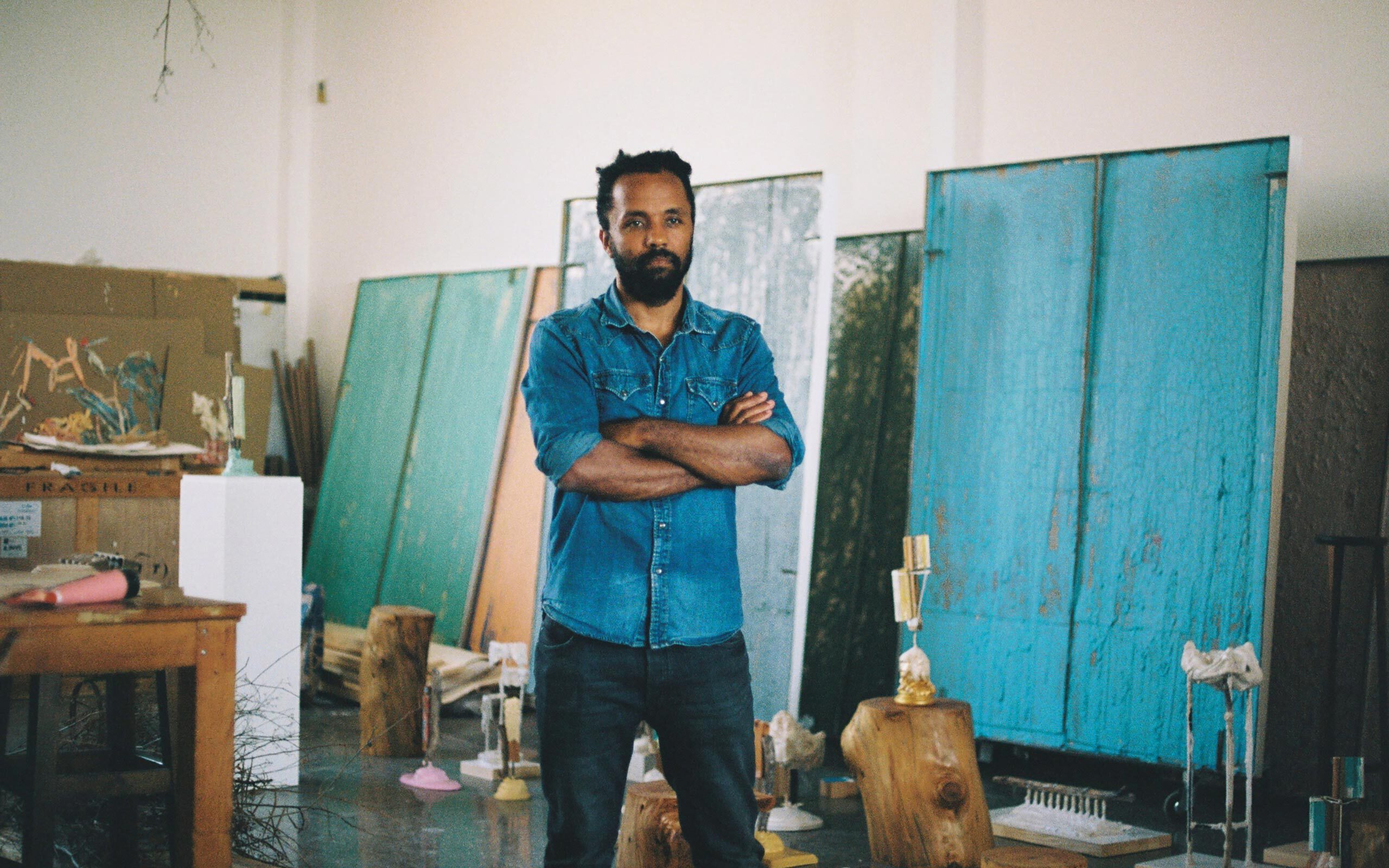
Interview: Carolina Jiménez
Photos: Lluís Tudela


